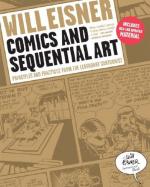
|
| Name: _________________________ | Period: ___________________ |
This test consists of 15 multiple choice questions and 5 short answer questions.
Multiple Choice Questions
1. What are gestures "almost idiomatic" to?
(a) Specific continents.
(b) Specific regions or cultures.
(c) Specific timezones.
(d) Specific economic backgrounds.
2. A comic artist's work must be reproducible by whose specifications?
(a) The financeer's.
(b) The reader's.
(c) The illustrator's.
(d) The publisher's.
3. What sort of inner emotions can contortions of the face reveal?
(a) Judgments, comfort, shoes.
(b) Pain, discomfort, comfort.
(c) Weather, pain, leaps of faith.
(d) Fatigue, morals.
4. What do purely instructional comics often use to show relevance?
(a) Humor.
(b) Sorrow.
(c) Indifference.
(d) Pain.
5. What is a modern attempt at codifying the wide range of postures and the emotions they reflect
(a) Body language.
(b) Verbal communication.
(c) Gesture and wave.
(d) Gestural structure.
6. What does Eisner depict in three panels as an example of the inseparability of words and images?
(a) Three golden retrievers.
(b) Five golden geese.
(c) Five gold rings.
(d) Two goldfish in a bowl.
7. What is the absolute ratio of words to picture in comics?
(a) Twenty characters for three panels.
(b) There is no absolute ratio.
(c) 3:1.
(d) 2:5.
8. What is usually the key to a gesture's meaning?
(a) The final panel.
(b) The final sketch.
(c) The final position.
(d) The final bubble.
9. What should the artist study before making comics?
(a) Geometry, anatomy, composition.
(b) Anatomy, perspective, and composition.
(c) Algebra, astronomy, drawing.
(d) Mathematics, science, religion.
10. What things are not described but added when words are coupled with images?
(a) Sound, dialogue, connections.
(b) Connections, webs, tangles.
(c) Sound, monologues, vocal patterns.
(d) Weight, height, style.
11. What approach predominates because comics mix letters and images?
(a) The tactile.
(b) The sensory.
(c) The lingual.
(d) The visual.
12. What gives voice to thoughts and gives meaning to action?
(a) Monologue.
(b) Dialog.
(c) Analog.
(d) Soliloquy.
13. Who is the artist at the mercy of?
(a) The copywriter's shop.
(b) The publisher's shop.
(c) The commentator's shop.
(d) The engraver's shop.
14. What does reading provide for the artist that he or she can use?
(a) A bank of facts and information.
(b) A safe of information.
(c) A supply of ideas.
(d) A basket of topics.
15. What depends on choosing worthwhile themes and innovating the exposition?
(a) The future of the graphic novel.
(b) The past of the graphic novel.
(c) The future of the written word.
(d) The past of periodical comics.
Short Answer Questions
1. What must artists know about the force of gravity?
2. What should artists also read steadily to learn how to create plot and narration?
3. What was used initially to create code that can be memorized and deciphered?
4. How can instructional comics be divided?
5. What skills are mandatory because the sequential art of comics is intended for reproduction?
|
This section contains 449 words (approx. 2 pages at 300 words per page) |

|




